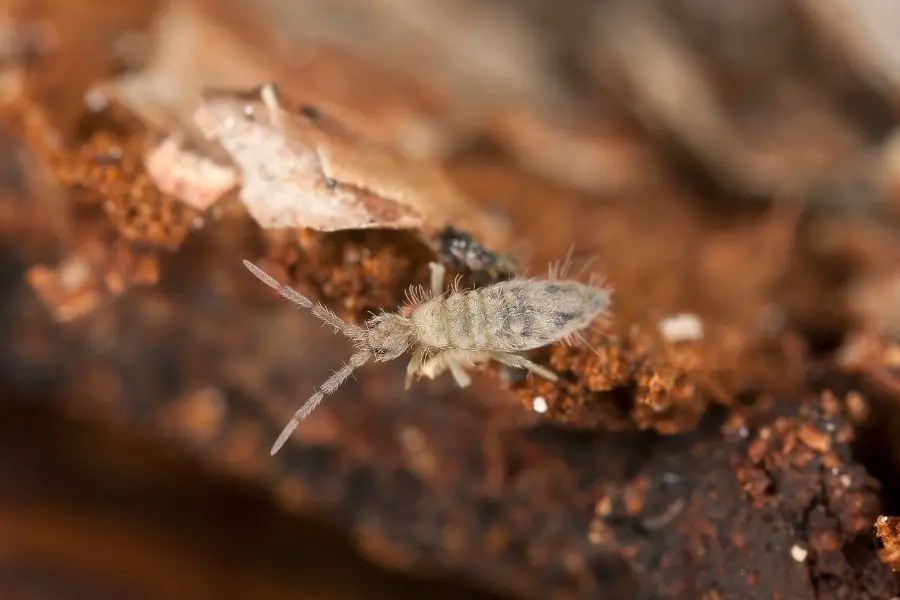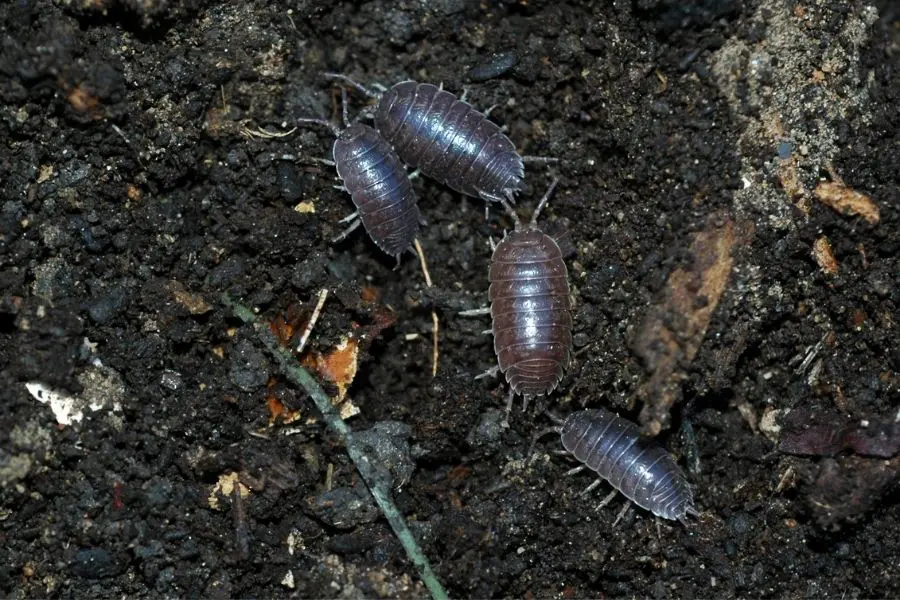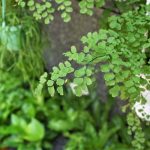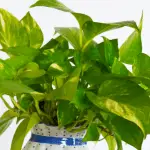
Do you have tiny silver bugs in your houseplant soil? In this guide, we’ll cover what they are and how to get rid of them – for good!
I check on my houseplants every morning to see which ones need water and attention. One morning I woke up to find little silvery-colored insects crawling around the soil of my newest plant. Needless to say, I was disgusted! I set out to find out exactly how to deal with them.
First of all, what are these insects? If they’re silvery-gray in color, they are either springtails or isopods. In my experience, springtails are the most common in houseplants. But we’ll take a look at both in this post.
What are Springtails?
Springtails are tiny insects – less than 1/2-inch in size – and are most commonly silver, gray, or purplish in color.
They have a forked tail known as a furcula. It’s hinged at the base, allowing it to fold under the body. It functions as a spring, propelling the springtail forward in short little hops. They are often called “jumping dirt” due to this mechanism.
If you notice the bugs on your soil appear to be jumping in little bursts, you most likely have springtails. If they are very small, they may just look like crawling silver dots on the soil surface.
These pests feed on bacteria, fungi, microbes, and decaying material, which makes houseplant soil an ideal environment. Luckily, this means they won’t actually damage your houseplants. In fact, they can even make them healthier by consuming harmful substances in the soil and excreting nutrient-rich material the plant can use.
But who wants a plant teeming with insects? Not me! Even if they are beneficial.
How to Get Rid of Springtails
Springtails are attracted to moist, decaying material. If your houseplant soil is kept moist, as many plants require, these insects will be drawn to it. Keep in mind that they won’t actually harm your plants, but you still might want to get rid of them.
The best way to get rid of springtails is to sprinkle diatomaceous earth on the surface of the soil.
Diatomaceous earth is a substance made from fossilized aquatic organisms called diatoms ground into a fine powder. The powder contains about 80 – 90 percent silica, and it kills insects by drying them out or dehydrating them on contact.
I have successfully used diatomaceous earth to get rid of a springtail infestation, so I can vouch for its effectiveness. It’s also non-toxic to humans and pets, easy to use, and very inexpensive. You can buy a small container for less than $10 on Amazon. (Make sure to buy a product with NO fillers.)
I would not recommend using a pesticide for springtails because they’re so easy to kill with diatomaceous earth.
What are Isopods?
Isopods are not actually insects, but crustaceans related to crayfish and lobsters. They’re easy to identify by the flattened plates on their bodies that make them look like tiny armadillos.
They can appear silver, gray, or brown. About 1/2-inch in length, they commonly roll up into balls when touched.

You may know these creatures as pill bugs, roly-polies, or woodlice.
They’re drawn to the dampness and decaying material present in houseplant soil. Bigger than springtails, they should be easy to identify. They can get quite large, so if you’re seeing tiny ones in your soil, they are very young. These pests will occupy the top 1-2 inches of soil.
Isopods will not harm your houseplants either, and they won’t harm anything in your home. In fact, if they travel too far from the plant they won’t live long. But you still probably don’t want them crawling around in your houseplant soil!
How to Get Rid of Isopods
The easiest way to get rid of isopods is to simply remove them by hand. They’re not harmful and will usually just roll up in a ball when you touch them. Move them outside and you’re good to go!
But what if you have a bad infestation and can’t remove them all by hand?
The next best method is to use diatomaceous earth. Just like with springtails, diatomaceous earth will dry the bugs out on contact and kill them quickly. I always hate to kill a roly-poly, personally, so if I notice them on my plants I try to remove them by hand.
Another method you can use is to place a trap (which will also kill them but it is effective). Place a small container inside the pot up against the side. Fill it with kombucha or beer. A small bowl, cat food can, or tuna can works fine.
The isopods are attracted to the fermented liquid, and they’ll fall in and drown. This is probably the least effective method, but it can work in a pinch if you don’t have any diatomaceous earth on hand.
Again, I would not recommend trying to use pesticides for isopods. They can easily be removed manually or as a last resort, killed with diatomaceous earth.
Quarantine Infested Plants
If you see any type of insect or pest in your houseplant soil, always quarantine the plant immediately. Move it far away from your healthy plants so the infestation doesn’t spread. If I notice a plant has pests, I take it outside to my shed until I’m sure the problem is resolved.
If you leave your infested plants near your healthy ones, you risk losing them all.
This mostly refers to springtails and other pests – not so much isopods. But when in doubt, always quarantine houseplants with pests or diseases.




